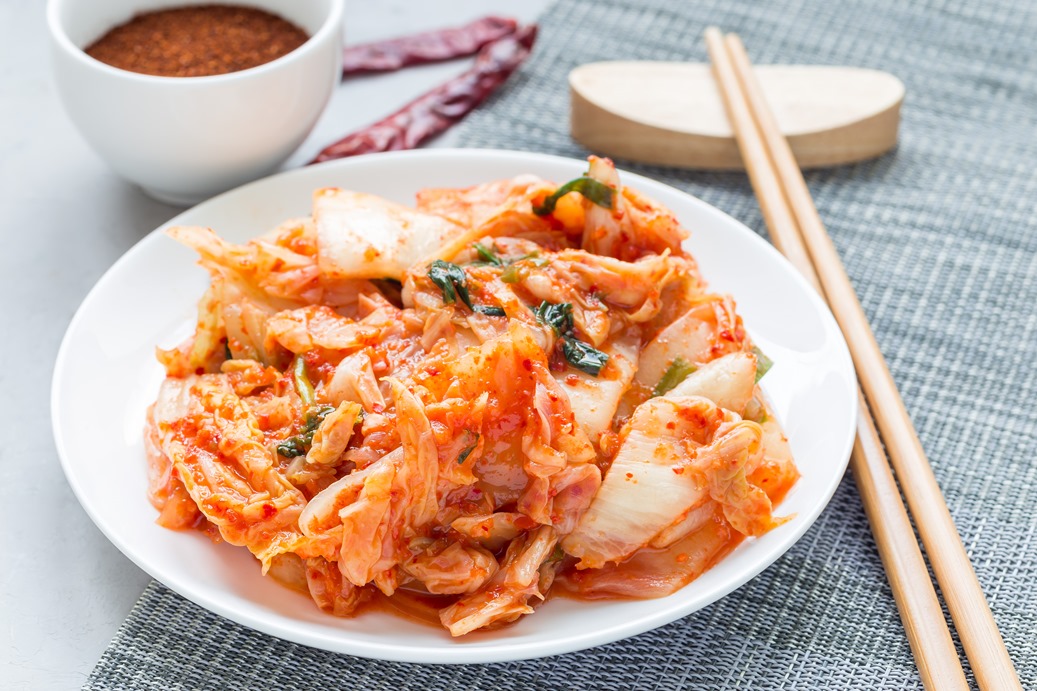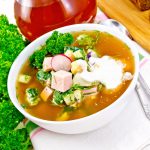If you want the long version of The History of Kimchi then click this link from the Korea Tourism Organization. They have plenty of useful tidbits such as the origin, use of main ingredients, photo gallery and numerous resources for information on Korean culture.
Kimchi is is a traditional fermented Korean side dish made of vegetables with a variety of seasonings. It is often described as spicy and sour. (source Wikipedia)
My short version of the history of kimchi is that kimchi originated as a pickled food when the Koreans were salting fish and other vegetables and since fermented and salted foods keep well it made sense to implement it to locally grown vegetables. It was an unspicy dish much like sauerkraut. The notorious red pepper was later introduced when Japan invaded in 1592 but was not utilized in the recipe until 200 years later.
There are three main types of kimchi which are the whole cabbage kimchi (jeotgukji), diced radish kimchi (kkakdugi) and water kimchi (dongchimi). The main ingredients are usually the same and the only variation would be the main vegetable or sometimes protein(seafood) is used in the dish. Since it is a fermented dish it can keep for long periods of time in a cool and covered airtight container. In the winter months the Koreans will bury their kimchi mason jars underground as a sort of refrigeration and storage process, much like sauerkraut.
Preparation of kimchi is a tedious and time consuming process and thank goodness it is readily available in almost all major retail chain grocery stores these days. For two of my favorite kimchi recipes watch these videos by Maangchi (below). She is my authority on Korean cooking and if it weren’t for her I would have no clue as to how these authentic dishes come together. She has an emergency kimchi recipe for when you need it in a hurry and don’t have time to salt and ferment the heck out of your kimchi staples and the long version which is traditional and takes all day to prep and make.
Kimchi is typically served with all korean meals as a condiment much like salsa is served with all Mexican dishes and mustard with all German sausage dishes. You can use as little or as much as you like but be warned as the fermented sour smell tends to linger on your breath and seeps out of your skin when you sweat. Bring a toothbrush or strong breath mints, gum and deodorant if you have to go back to the office to work!
Kimchi has been scientifically proven (according to the Korea Tourism Organization) to be high in nutrition and low in fat. The capsaicin in the red pepper powder used in the kimchi has a host of health benefits. For a detailed list of those health benefits click here. The benefits include natural pain relief, inflammation relief, cardiovascular benefits, boosts immunity, clears congestion, prevents stomach ulcers, stops the spread of prostate cancer, lowers the risk of Type 2 Diabetes and helps with weight loss. Who knew one little side dish could pack such a powerful health boosting punch?
I hope you will take the opportunity to sample some kimchi and Korean food if you have not yet had the experience. I can’t imagine my life without it and I would not want to ever have to live without a jar of the glorious condiment sitting so pretty in my fridge!



